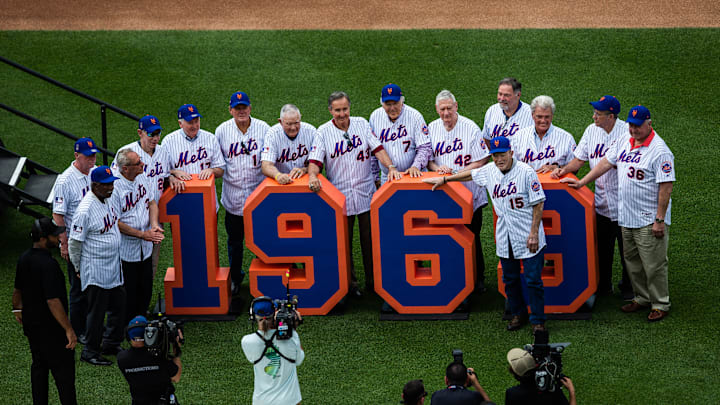The New York Mets are heading south this week to take on the Baltimore Orioles. Unless you’ve been living in a cave, you probably are aware that in 1969, the Amazin’ Mets defeated the Baltimore Orioles in five games to become World Series champions. We’ve all watched ’69 highlights during every rain delay on TV since then. We can all picture in our minds eye Tommie Agee’s two fantastic catches in game three, Ron Swoboda’s miracle catch in game four, and Cleon Jones’ shoe polish incident in game five.
However, there are also a few things that you might not know about our beloved 1969 championship team and the city they represent. Here are three facts from the 1969 NY Mets / Baltimore Orioles World Series that don't get talked about near enough.
Three facts that don't get talked about enough
1. Gil Hodges’ Platoon System: Gil Hodges was renowned for his effective use of a platoon system. He aimed to maximize his players’ strengths by matching their abilities against each opposing pitcher. Hodges was consistent in his approach, even during the World Series, rotating players the same way he had done all season long. Prominent examples of this were the right field platoon between lefty Art Shamsky and righty Ron Swoboda, first base platoon between Ed Kranepool and Donn Clendenon, and the third base platoon of Ed Charles and Wayne Garrett.
This strategic use of the platoon system is credited with significantly improving the Mets' offense, contributing to their remarkable turnaround and World Series victory in 1969. It was the cornerstone of the Mets' success, showcasing Hodges’ ability to manage his roster strategically and prioritize the team’s overall performance over individual statistics.
2. New York City vs Baltimore: The year 1969 was a great time to be a New York sports fan. However, if you were a fan of the Baltimore sports teams, it might have been a good time to start checking the classifieds for a cave of your own. Earlier that year on January 12, the NY Jets had defeated the Baltimore Colts in Super Bowl III for the NFL championship.
Following the Mets championship, the NY Knicks would go on to win the NBA title, defeating the LA Lakers in the finals behind Willis Reed, but also having defeated the Baltimore Bullets in the playoffs along the way. The Colts moved to Indianapolis and the Bullets moved to Washington as the Wizards, but that’s still enough history for one city to hold a grudge against another for a very long time.
3. What’s in a name? Why are they called the "Amazin' Mets"? The nickname was originally coined by the team’s first manager, Casey Stengel. At the time, it was used with a degree of irony due to the team's struggles. Fans came out to the games knowing full well that their team's chances of victory were never good, but they were still glad to have National League baseball back in New York City. The media referred to this hybrid of former Giants fan/ former Dodgers fan / Mets fan as “The New Breed.”
This nickname became widely used to describe the 1969 team, often referred to as the “Amazin’ Mets” or even "Miracle Mets", who surprisingly won the World Series against the Baltimore Orioles. But that Mets team won 100 games and swept the Atlanta Braves in the first ever NLCS. This was a quality team who had earned their right to play and win the World Series. There was nothing amazing, lucky, or miracle about them.
